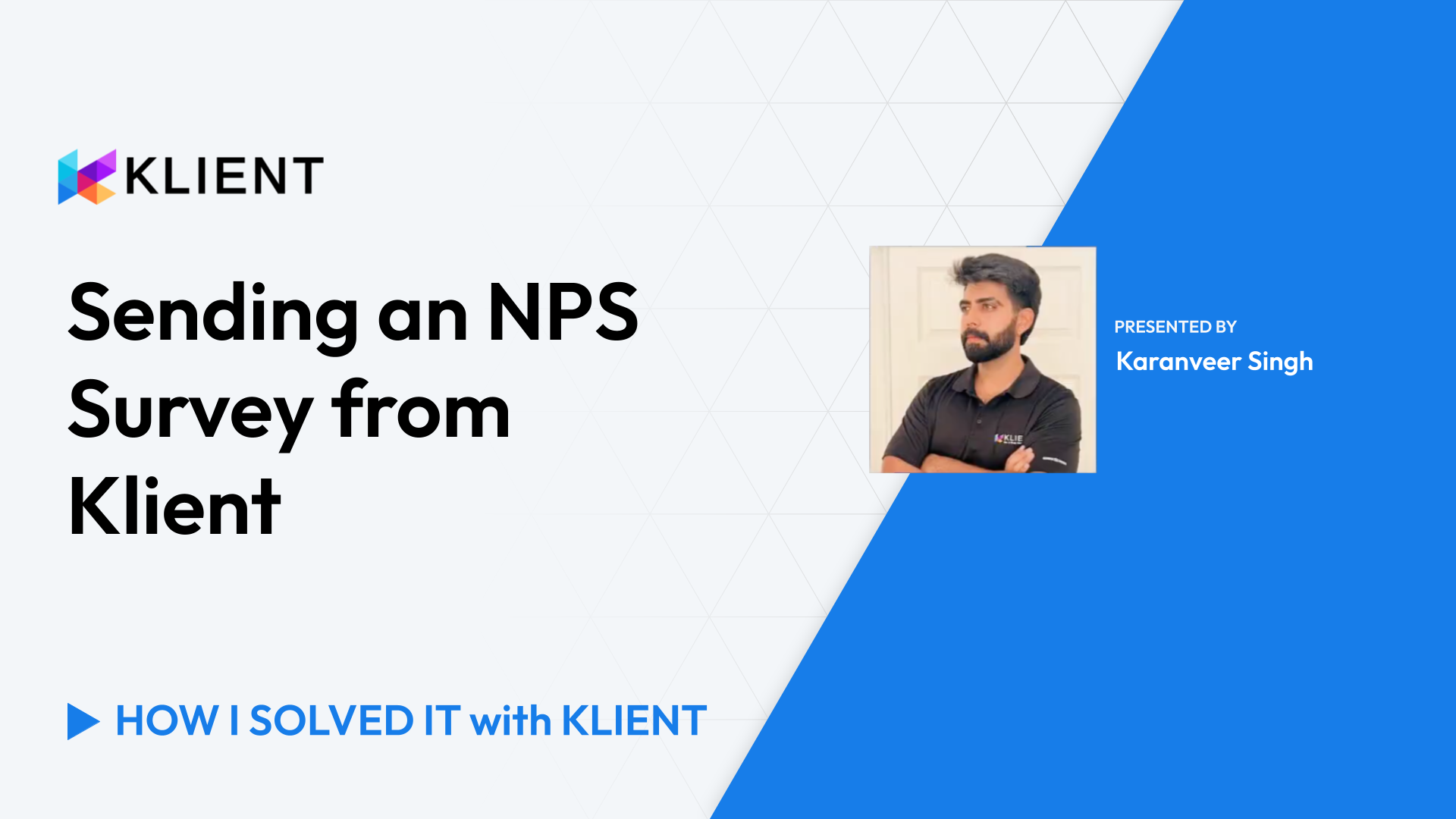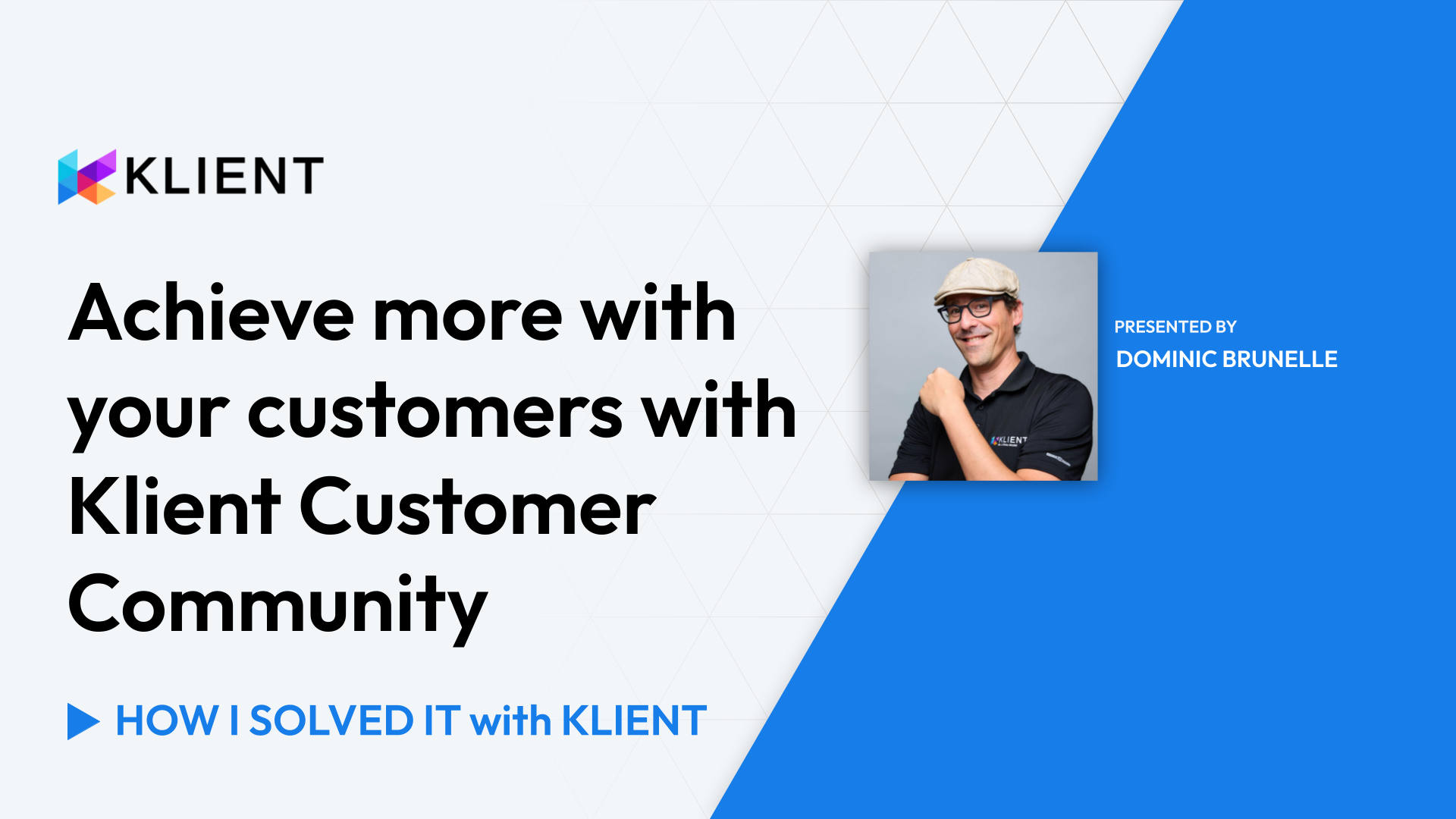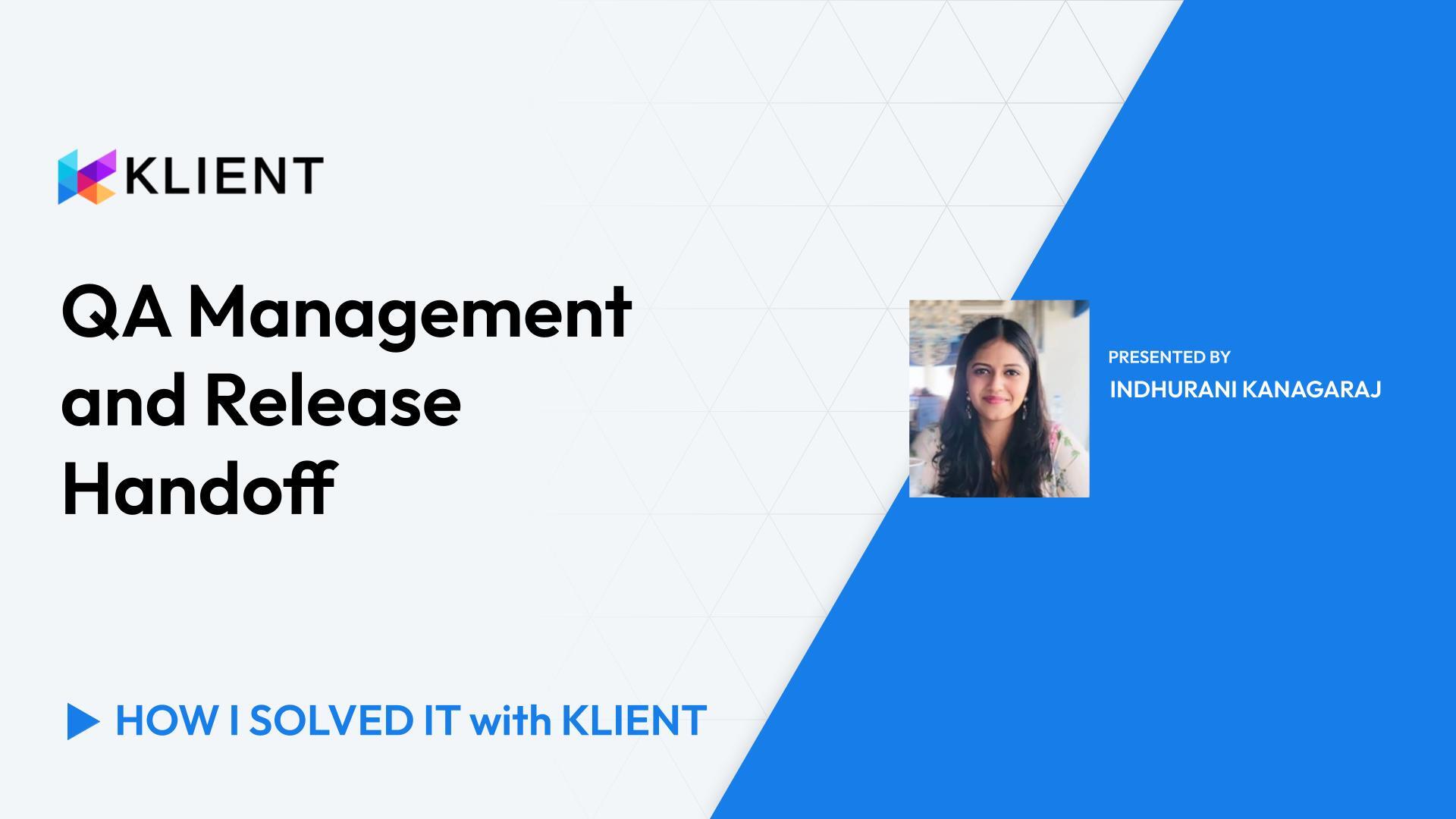Agile Sprint Planning & Release Management
In this video, Klient Product Manager addresses how he uses Klient as a product manager and manage their day-to-day:
Creating epics or projects using templates
Adding stories and acceptance criteria
Assigning resources and tagging stories into sprints
Managing requirements with Quip
Having a holistic view on the sprint and managing releases
0:00 – Introduction to Agile Sprint Planning & Release Management
Hi everyone! In today’s video, I’ll be talking about How I Solved It With Klient to do agile sprint planning and release management. In today’s agenda, we’ll cover the topics such as seamlessly creating epics or projects using templates such as administration projects and development projects. Then we’ll look at the process of categorizing tasks such as story or a bug and prioritizing them along with tagging them to the right sprint and assigning them to the resources. Then we’ll look into the process of release management, where we tag projects into releases so they can be shipped out as planned. Before we start the video, I want to look at some of the key challenges and how Klient helps solve them.
0:35 – Key Challenges & Klient Solutions
Klient provides a centralized platform where business requirements are documented and managed. It allows for easy collaboration between stakeholders, project managers, and development teams. We maintain these requirements in Quip, which is integrated with the project module, allowing me to easily translate these requirements into user stories. Klient offers resource management functionalities that enable product managers to allocate tasks efficiently based on the team member’s skill, availability, and workload. I personally use Workspace to efficiently assign stories and bugs to resources. Klient supports Agile methodologies by providing tools for sprint planning, tracking and monitoring progress. It allows my team to prioritize tasks within the sprint, set the sprint goals, and track progress and manage communication across the team. Klient also offers portfolio management capabilities that provide a holistic view of all projects and releases across the organization. Managers can track the status of releases, identify dependencies between projects and allocate resources strategically to ensure timely delivery.
1:33 – Creating Epics & Projects Using Templates
In this video, I’ll be talking about how I use Klient as a product manager and manage my day-to-day, which is essentially creating epics or projects, adding stories to them, tagging them into a sprint, assigning resources to them, and then finally tagging them to a plan release. We use templates to create projects so that all the tasks which are predefined to be worked on our project comes along with the template. Then I go about and write stories and acceptance criteria for those stories. After that, I sit with the team and groom those stories so we come up with dependencies and estimated hours. Once the grooming is done, we assign the story to team members and then tag them into a sprint. Once that’s done, I can see a holistic view of what’s happening in the sprint.
2:05 – Managing Requirements with Quip
So let me take you through the process of creating a new project. So for that we’ll just click the ‘New’ button here. We’ll specify the type of the project so in our case it’ll be ‘Development’ project. After that, the new project creation page will be opened up. In here we’ll define the record type for the project. After that, we can give the project the name. And this is where we choose the template. So in our case, in our example, we’ll choose the ‘Klient Development’ template. Although there are multiple options I can pick from. On clicking ‘Save’, new project creation wizard will run, and this is gonna clone all the tasks which are part of the template. It will pair in those tasks, it will create all the task assignments, and then finally it will create task sections and when I’ll be redirected to the new project page, I will be able to see all those tasks created. So the process is finished and this is where I can open up the Workspace and I will see all the tasks that came along along the template. Important tasks such as the architecture, document, release notes, QA document, any requirements approval we need, and this is where I then start and add user stories.
3:04 – Assigning and Prioritizing Stories
So as an example, we’ll take an existing project. The way we manage requirements is through Quip and we have requirements tab here. So this is integrated with Klient and this is where all the business requirements are kept. And after that, we simply translate them into user stories. I’ll open up the Workspace, this is where I’ve already added user stories for the project. The description and the proposed solution with any mockups. Then there is a concept of task type. So stories, story bug or task, we can specify it. We can prioritize the stories. This is where we tag them into a sprint so that we can have a holistic view on the sprint. All the estimated hours can be added. And then finally a resource can be assigned. In order to do that, I simply choose assignee button. If I need to assign multiple tasks to the resource, I can also do that and I can mass assign the resource to multiple tasks. As a resource they also use Workspace. They can come here if they need to do any collaboration with the team. To get unblocked on anything they can simply use the chatter option and they can tag the relevant team members.
3:56 – Holistic Sprint View & Release Management
So this is how I tag a particular project into a sprint and a plan release and I repeat this process for multiple projects. And once that is done, I can have a holistic view on the sprint. So for that, we’ll go to the Klient tasks. This is an example sprint, which is ongoing. It has multiple projects being worked upon by different resources. And this is how easy it is for me to manage an ongoing sprint and this is very handy in running daily scrums because we can have the updates from the team members and unblock them if need be. The other important thing is the key KPIs that are maintained as the project progresses. So all the estimated hours, the logged hours from the resources, any costs, they’re all maintained at the project level. The other important thing is plan release. So as you can see, we have this plan release module and this is where we tag a project or a story into a given release. And on the plan release we have some key dates, the release date, the GA date, internal QA dates, and all the release highlights. And if I scroll down, I’ll see the tasks and the projects which are planned on a given release.
4:52 – Conclusion
So that’s it from my side and this is how easy it is to manage Agile teams and do sprint planning, sprint execution, and release management using Klient. Thank you everyone for watching and let us know if you have any questions!

Found this helpful?
Here are some similar videos in our serie How I Solved It with Klient
Subscribe to our channel
Visit and subscribe to our channel for more insights on leveraging Klient to solve your business challenges.










